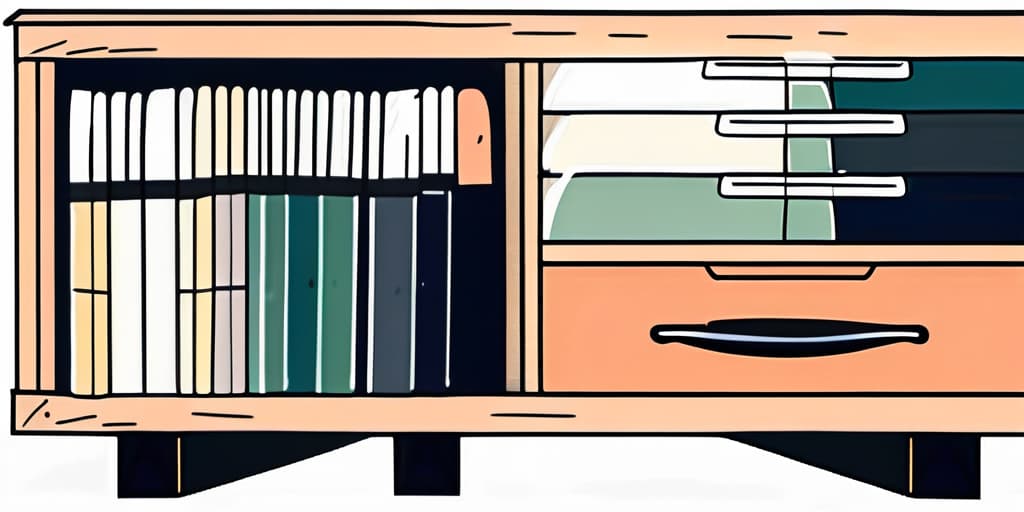In today’s digital age, where information is easily accessible at our fingertips, the analog Zettelkasten offers a refreshing and effective approach to knowledge management. Whether you’re a student, researcher, or simply someone who values organizing their thoughts and ideas, understanding the concept of Zettelkasten can be a game-changer. In this ultimate guide, we will explore the origins and philosophy behind Zettelkasten, the importance of this system in knowledge management, and how to set up and maintain your own analog Zettelkasten.
Understanding the Concept of Zettelkasten
Before we dive into the practical aspects of Zettelkasten, it’s important to understand its origins and philosophy. The concept of Zettelkasten can be traced back to the influential German sociologist, Niklas Luhmann. He developed this unique note-taking system as a way to manage and connect knowledge effectively.
The Origin and Philosophy of Zettelkasten: The Zettelkasten (German for “slip-box” or “card index”) is a physical collection of individual notes or “Zettels” that are linked together through a hierarchical and non-linear system of connections. The philosophy behind Zettelkasten is to encourage and facilitate association, creativity, and continuous learning.
The Importance of Zettelkasten in Knowledge Management: In an era where information overload overwhelms us, Zettelkasten offers a solution. By breaking down complex ideas into smaller, interconnected notes, Zettelkasten allows us to grasp and retain knowledge more effectively. It serves as a powerful thinking tool that enhances comprehension and fosters creativity.
Benefits of Implementing Zettelkasten: One of the key benefits of implementing a Zettelkasten system is the ability to make unexpected connections between seemingly unrelated topics. This process of linking notes together can lead to innovative ideas and unique insights that may not have been apparent before. Additionally, the act of creating and organizing Zettels can help individuals develop a deeper understanding of the material they are studying.
Enhancing Productivity with Zettelkasten: Another advantage of using Zettelkasten in knowledge management is its potential to boost productivity. By structuring information in a way that promotes quick retrieval and cross-referencing, individuals can streamline their workflow and make more efficient use of their time. This organized approach to note-taking can also reduce cognitive load and decision fatigue, allowing users to focus more effectively on their tasks.
Setting Up Your Analog Zettelkasten
Now that you have a good grasp of what Zettelkasten is all about, let’s explore the practicalities of setting up your own analog Zettelkasten.
 But before we dive into the nitty-gritty details, let’s take a moment to appreciate the beauty of the analog approach. There’s something magical about the physicality of using index cards and folders to create your knowledge management system. The weight of the cards in your hands, the sound of shuffling through them, and the satisfaction of arranging them just right can add a tactile pleasure to your note-taking process.
But before we dive into the nitty-gritty details, let’s take a moment to appreciate the beauty of the analog approach. There’s something magical about the physicality of using index cards and folders to create your knowledge management system. The weight of the cards in your hands, the sound of shuffling through them, and the satisfaction of arranging them just right can add a tactile pleasure to your note-taking process.
Imagine sitting at your desk, surrounded by stacks of neatly organized index cards, each holding a nugget of knowledge. As you write and arrange the cards, you can’t help but feel a sense of connection to the ideas you’re capturing. It’s a process that goes beyond the mere act of note-taking; it becomes a journey of discovery and understanding.
Choosing the Right Tools and Materials
When it comes to building your analog Zettelkasten, one of the key decisions you’ll face is choosing the right tools and materials. While there are no hard and fast rules, some popular choices include index cards, folders, or dedicated Zettelkasten software. Consider your personal preferences, budget, and the size of your knowledge management system.
But remember, it’s not just about functionality; it’s also about finding joy in the process. Experiment with different tools and materials until you find the setup that works best for you. Maybe you prefer the feel of a high-quality index card, or perhaps you find solace in the simplicity of a well-organized folder system. Whatever you choose, make sure it sparks joy and enhances your Zettelkasten experience.
Organizing Your Zettelkasten for Optimal Use
With the right tools in hand, it’s time to focus on the organization of your Zettelkasten. A well-organized system will make it easier for you to navigate through your notes and discover connections between various ideas.
Consider using a hierarchical approach, where you assign categories or themes to your notes. This will allow you to group related concepts together and provide a clear structure for your knowledge database. Imagine the satisfaction of seeing your Zettelkasten come to life, with interconnected ideas forming a web of knowledge.
But don’t be afraid to embrace the chaos as well. Sometimes, the most unexpected connections and insights can arise from the seemingly unrelated. Allow your Zettelkasten to be a playground for serendipity, where you can stumble upon hidden gems and spark innovative ideas.
The Process of Creating Notes in Zettelkasten
Now that you have a functional analog Zettelkasten, let’s explore the process of creating notes within this system.
 ### The Art of Note-Taking
### The Art of Note-Taking
Effective note-taking is a skill worth honing, and Zettelkasten provides a conducive environment for cultivating this art. When creating notes, strive for brevity and clarity. Keep your notes concise, focusing on capturing the core idea or concept. Avoid copying verbatim and instead paraphrase information in your own words. This not only aids understanding but also ensures that your notes reflect your unique perspective.
But note-taking is not just about summarizing information; it’s about engaging with it. As you create your notes, take the time to reflect on the material. Ask yourself questions, challenge assumptions, and make connections to other ideas. This active approach to note-taking will deepen your understanding and help you retain the information for longer.
Additionally, consider using formatting techniques such as bullet points, headings, and bold text to make your notes more scannable and visually pleasing. These techniques will help you quickly identify key points and connections when reviewing your Zettelkasten.
Linking and Connecting Notes
One of the most powerful features of Zettelkasten is its ability to link and connect individual notes. As you create new notes, actively seek connections between ideas. Look for similarities, contrasts, or dependencies. By linking related notes, you create a web of knowledge that transcends the limitations of linear thinking.
But don’t limit yourself to just obvious connections. Be open to serendipitous connections as well. Sometimes, the most innovative ideas emerge when seemingly unrelated concepts come together. Embrace the interplay of ideas and allow your Zettelkasten to facilitate this creative process.
Furthermore, consider using tags or keywords to categorize your notes. This will make it easier to search for specific topics or themes within your Zettelkasten. By organizing your notes in this way, you’ll be able to navigate through your knowledge repository with ease, finding relevant information whenever you need it.
In addition to linking and categorizing, consider adding your own commentary or insights to your notes. This personal touch will make your Zettelkasten truly unique and reflective of your own intellectual journey. Don’t be afraid to express your thoughts, opinions, and even doubts. Your Zettelkasten is a living system that evolves with you.
Tips for Maintaining Your Analog Zettelkasten
Like any system, your analog Zettelkasten requires regular maintenance to ensure its effectiveness and longevity.
 ### Regular Review and Update
### Regular Review and Update
Set a schedule for reviewing and updating your Zettelkasten. Review older notes periodically, revisiting and building upon your existing knowledge. Update your system with new notes, reinforcing connections and expanding your web of knowledge. By regularly engaging with your Zettelkasten, you not only reinforce your understanding but also create a dynamic repository of ideas that constantly evolves.
Dealing with Overflowing Information
As you delve deeper into the world of knowledge management, you may face the challenge of overflowing information. Don’t let this discourage you. Instead, embrace it as an opportunity to refine and optimize your Zettelkasten system. Regularly evaluate the relevance and usefulness of your notes and make adjustments as necessary. Consider pruning outdated or extraneous information to keep your knowledge base focused and concise. Remember, Zettelkasten is all about distilling knowledge down to its essence.
Transitioning from Digital to Analog Zettelkasten
If you are already using a digital note-taking system, you might be wondering if transitioning to an analog Zettelkasten is worth the effort. Here are some compelling reasons to go analog:
The Benefits of Going Analog
-
Tangibility and tactile experience: The physicality of using index cards enhances the note-taking experience, making it more engaging and memorable.
-
Promotes focused thinking: With digital distractions removed, analog Zettelkasten encourages deep focus and uninterrupted thought.
-
Enhances creativity: The non-linear nature of an analog Zettelkasten stimulates connections and sparks innovative ideas.
Challenges and How to Overcome Them
Switching from a digital to an analog system may require an adjustment period. Here are some tips to overcome common challenges:
-
Start small: Begin with a manageable number of cards or notes, gradually expanding your Zettelkasten as you become more comfortable with the analog workflow.
-
Embrace the limitations: Recognize that analog systems have constraints, such as limited physical space. Use these limitations to your advantage, prioritizing the most valuable information.
-
Experiment and iterate: Don’t be afraid to adapt and refine your analog Zettelkasten. Allow it to evolve alongside your needs and preferences.
By embracing the philosophy and practicality of analog Zettelkasten, you can unlock new levels of knowledge management and enhance your learning journey. Start small, invest time in understanding and implementing this system, and reap the rewards of a well-organized mind. Happy note-taking!
